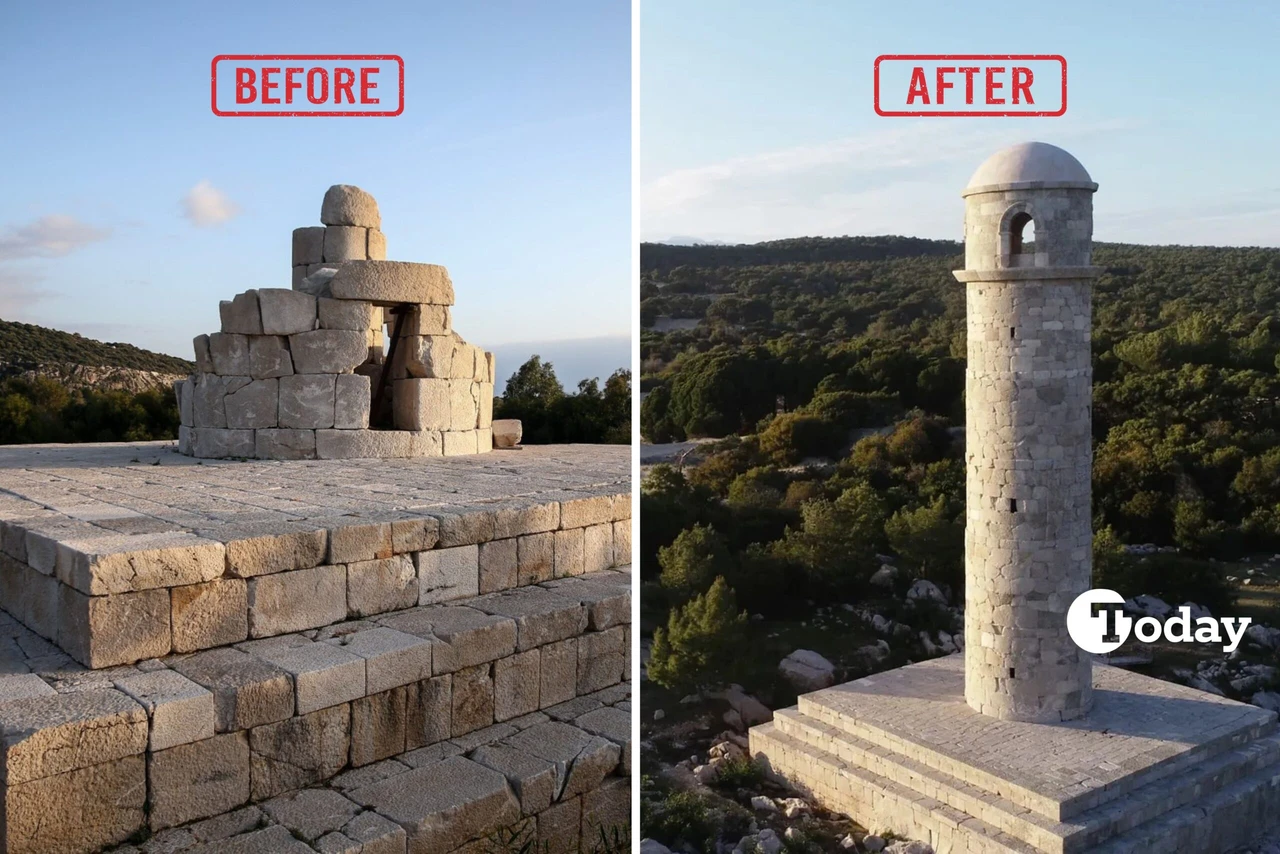Ancient mosaics at Türkiye’s ancient city of Sardes brought back to life by local women
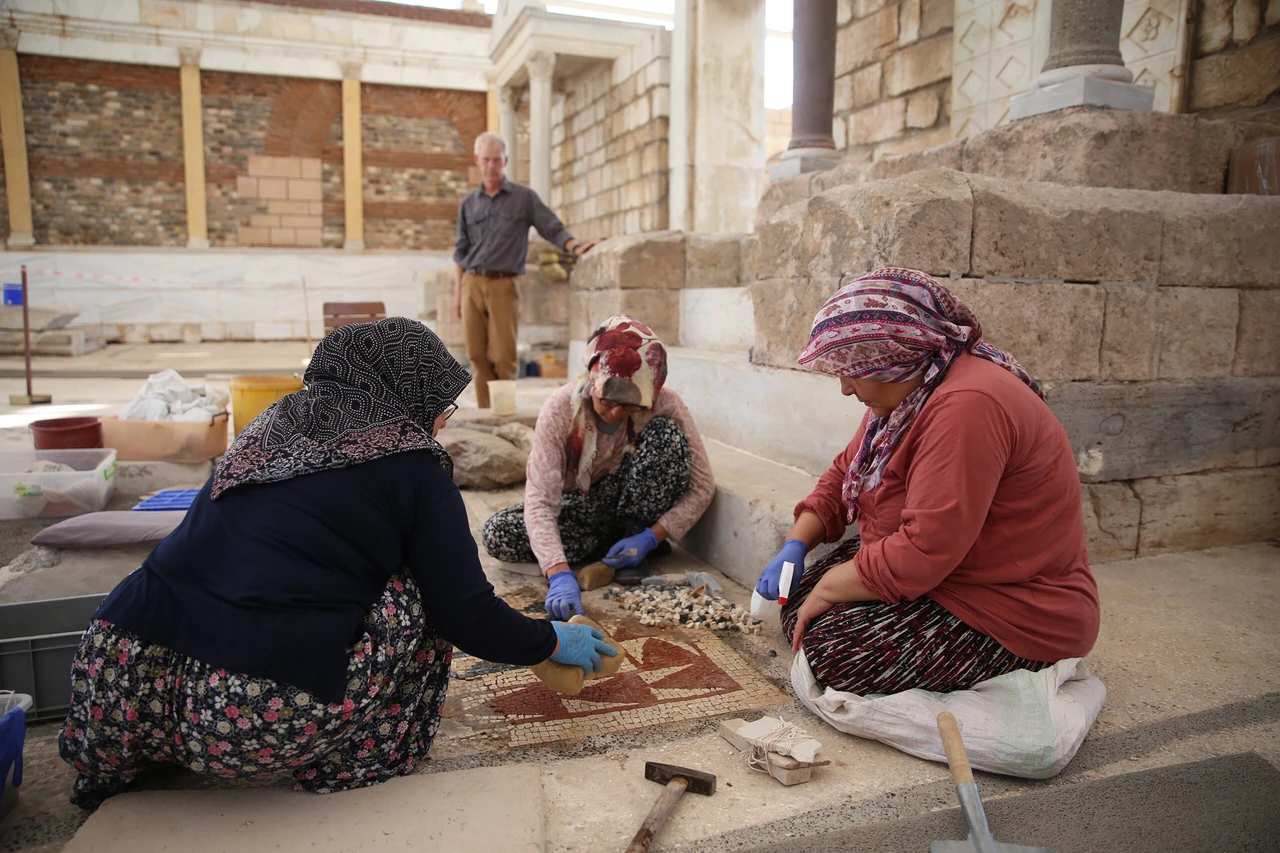 The floor mosaics of a nearly 2,000-year-old structure, considered one of the largest synagogues of the ancient world, located in Sardes Ancient City, are being meticulously restored to their original state by women from the surrounding rural area, Manisa, Türkiye, August 24, 2024 (AA Photo)
The floor mosaics of a nearly 2,000-year-old structure, considered one of the largest synagogues of the ancient world, located in Sardes Ancient City, are being meticulously restored to their original state by women from the surrounding rural area, Manisa, Türkiye, August 24, 2024 (AA Photo)
The capital of the Lydian Kingdom, ancient city of Sardes, known as the birthplace of coinage, is home to one of the largest synagogues of the ancient world. Its nearly 2,000-year-old floor mosaics are being restored to their original glory by a dedicated group of local women from the surrounding rural areas.
Located in Manisa’s Salihli district, archaeological excavations and restoration efforts at Sardes have been ongoing for nearly 120 years, currently led by professor Nick Cahill from the University of Wisconsin-Madison.
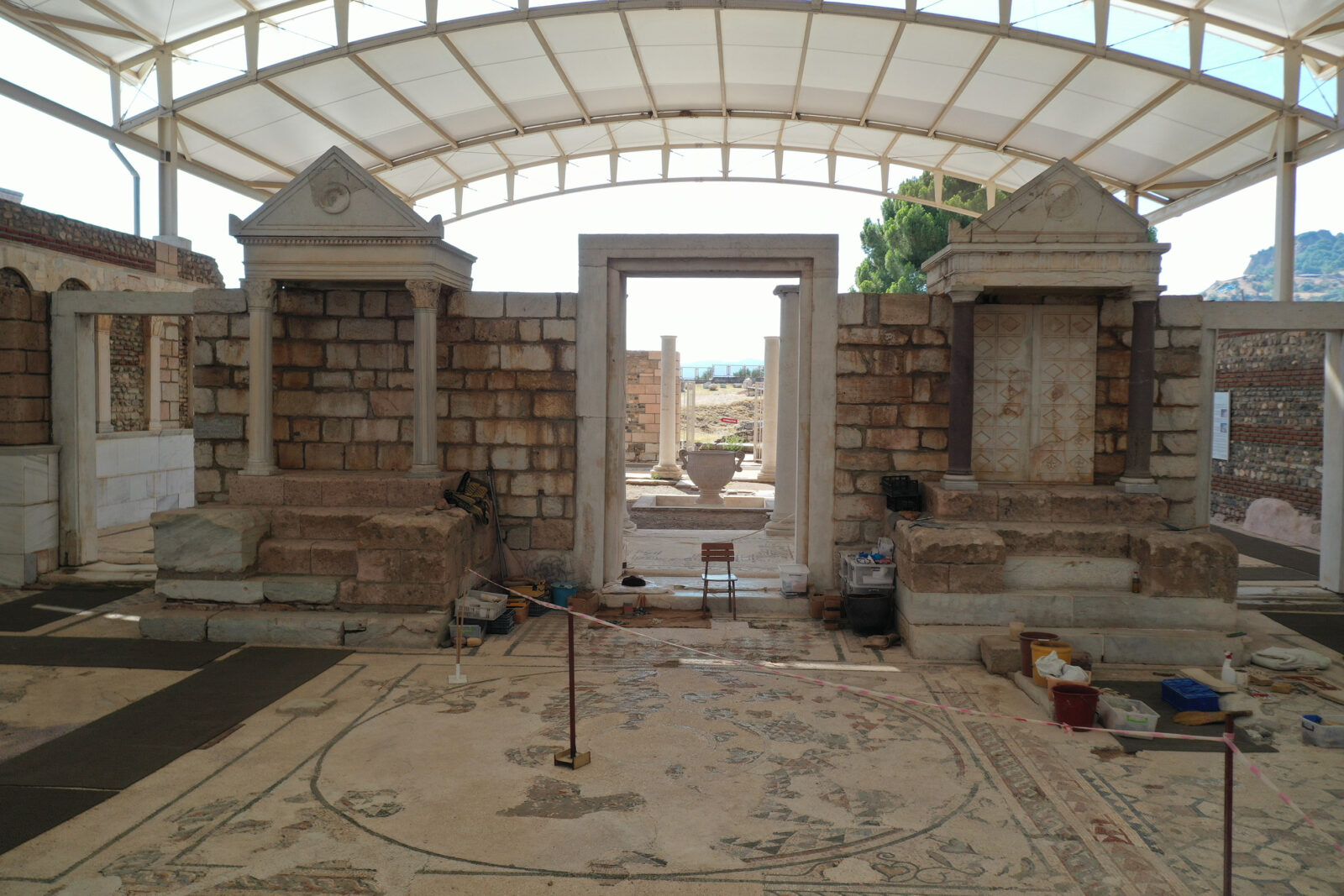
Dating back to 1200 B.C., the ancient city of Sardes hosts a rich collection of structures and artifacts from various civilizations. Visitors to the ancient city can explore Lydian tumuli, the Artemis Temple from the polytheistic era, the largest synagogue of the ancient world, the church mentioned in the Book of John, and the monumental Roman bath-gymnasium complex. Among these, the synagogue stands out as a key highlight of the region’s religious tourism.
Three years ago, the Sardes Synagogue was covered with a protective roof, and last year, restoration work began on its floors, adorned with stunning mosaics. The restoration of these damaged mosaics is being carried out by a team of nine women from the nearby Sart neighborhood, who have received special training for this meticulous task.
The Jewish community in Sardis is thought to have started around the 3rd century B.C., encouraged by Antiochus III, a king of the Seleucid Empire. Later, Roman officials Lucius Antonius and Caius Norbanus Flaccus supported the Jews’ religious rights and allowed them to have their own place of worship, which is believed to be the synagogue in Sardis.
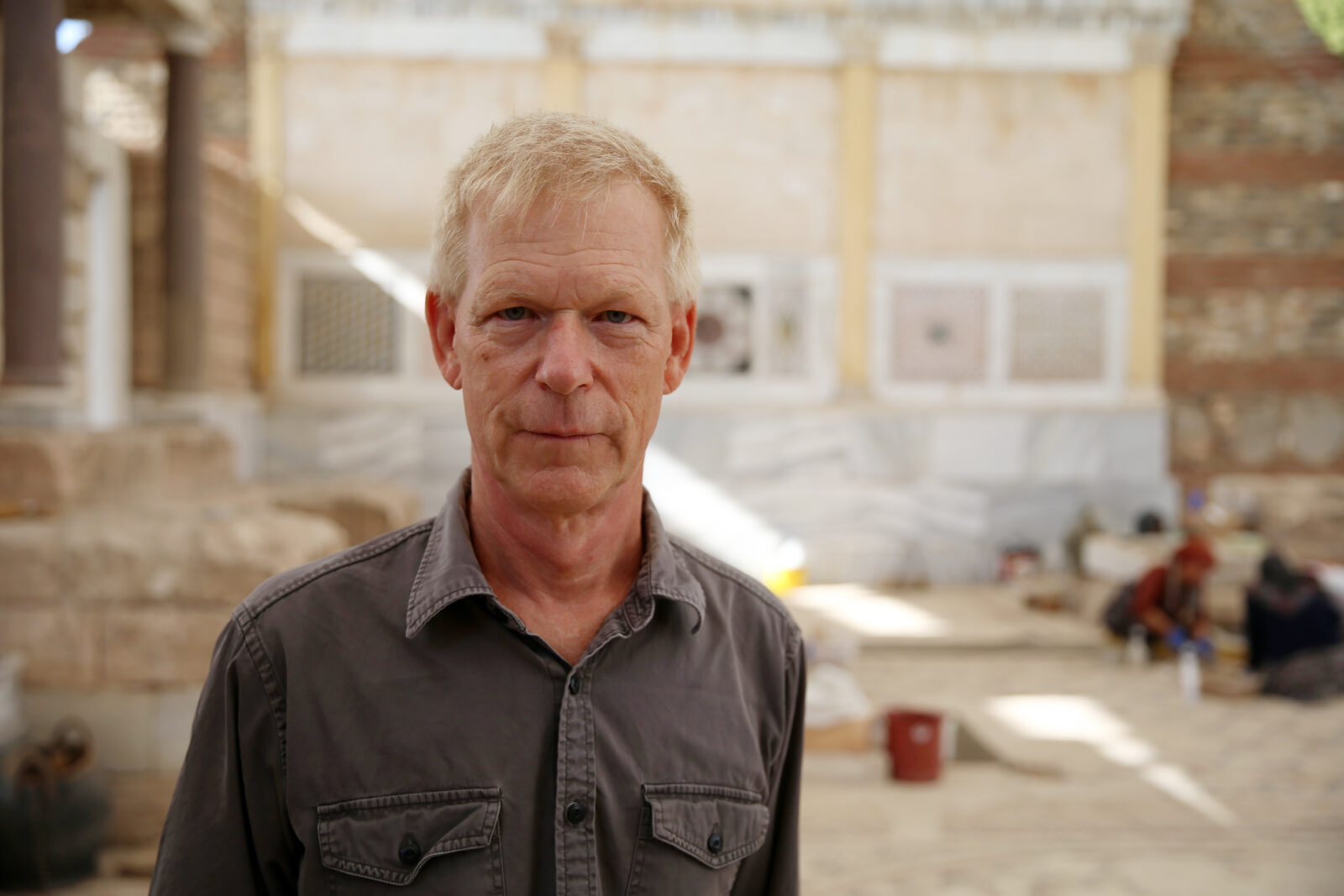
‘Carefully restoring mosaics in ancient city of Sardes’
Professor Nick Cahill explained that the Sardes Synagogue was discovered during excavations in 1963 and is recognized as the largest synagogue of the ancient world. He emphasized that the mosaics are being restored with natural stones sourced from different regions of Türkiye, in colors matching the originals.
“The women have become experts in this delicate work, perfectly recreating the patterns. For the past three years, they’ve been restoring the mosaics, filling in missing pieces with new stones. Soon, the designs will be even more visible,” Cahill stated.
In Manisa’s Salihli district, excavations at the ancient city of Sardis have been ongoing for 120 years.
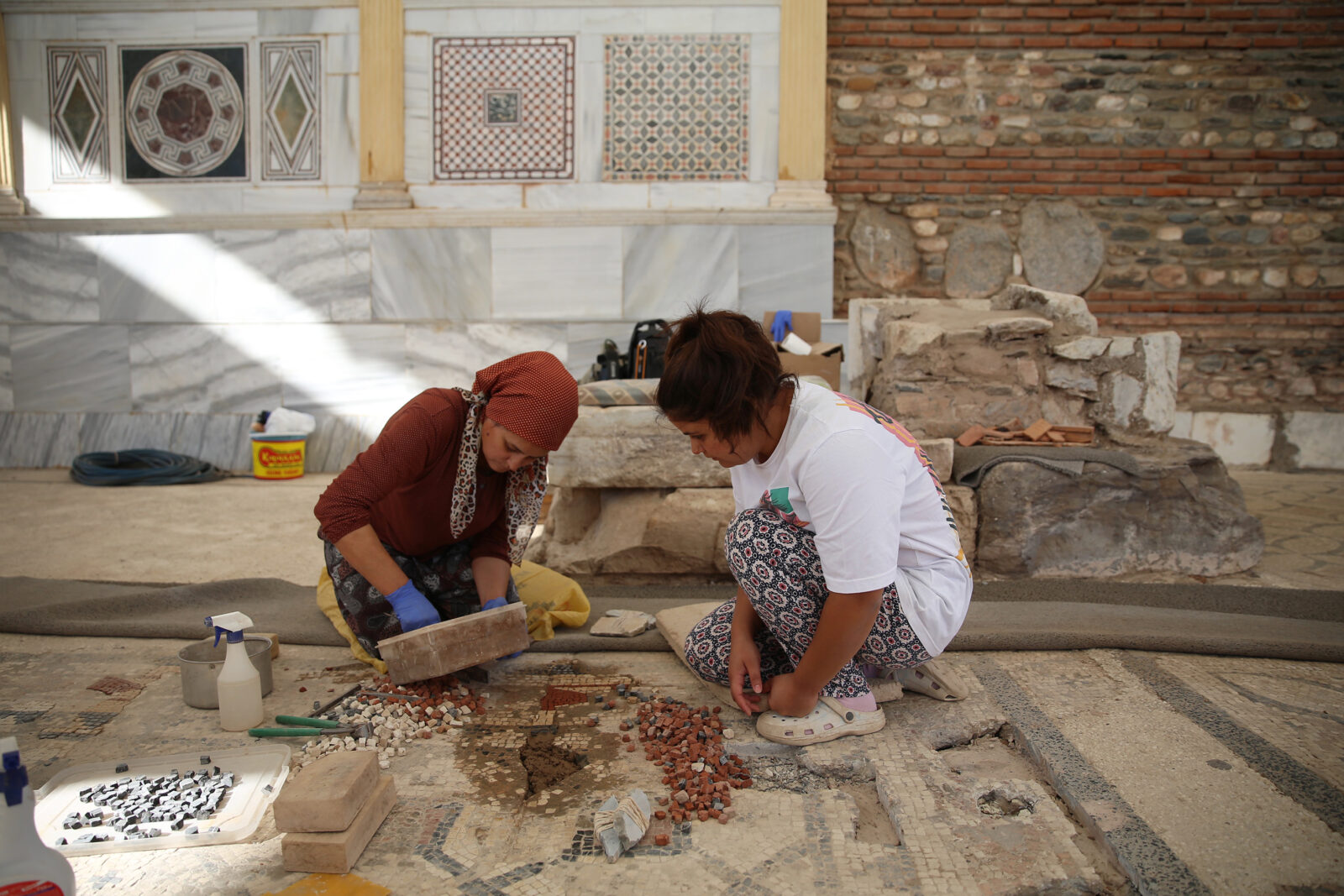
‘We embroider history like tapestry’
Sevinc Akcayim, one of the women working on the mosaics, described the pride and joy she feels in reviving history. “Touching history is exciting. In the future, our children will visit and say, ‘Our mothers and aunts worked here.’ We are happy to bring history back to life. It’s like embroidering a tapestry – such a rewarding job. Working alongside my daughter makes it even more enjoyable,” Akcayim said, highlighting both the personal and financial benefits of the work.
The women of Sardes are not only restoring ancient mosaics but also preserving a piece of their heritage for future generations. Their dedication to reviving these historic works of art ensures that the rich history of Sardes will continue to inspire visitors from around the world for years to come.
